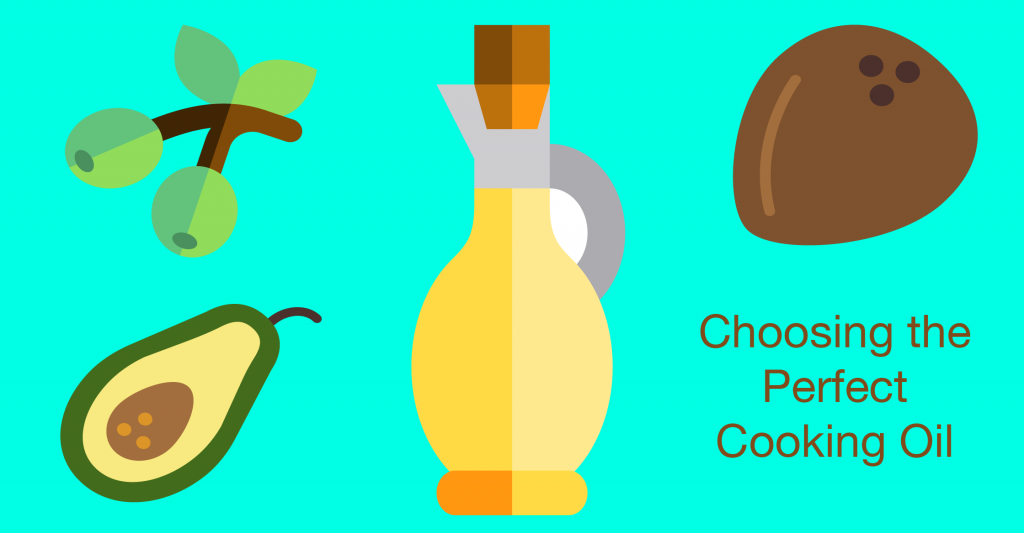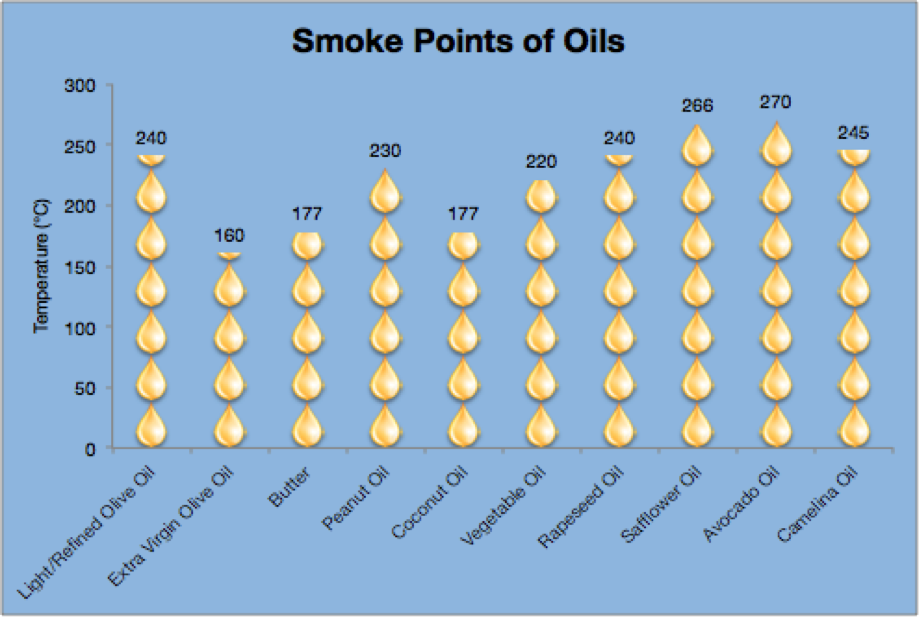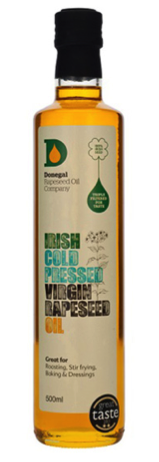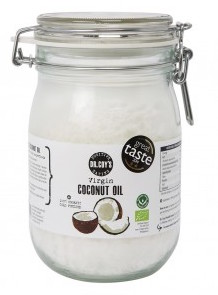Choosing the Perfect Cooking Oil

Have you ever burnt oil and ended up having to scrub the pan out after? It’s not nice! Using the wrong oil will not only result in lengthy cleanup but it’ll spoil an otherwise tasty dish and is also harmful to your health! This article will give you an overview of which oils are best suited for specific cooking clomid-info.com and help you wade through the vast array of choices out there.
Cooking Temperature
Cooking temperature is the main indicator of when one type of oil should be used over another. This is because all oils have different smoke points. The smoke point of an oil is the point at which the oil starts to smoke. Past this point is where the carbon bonds that make up the fat in the oil start to break down and oxidize with oxygen to form free radicals and other harmful compounds, some of which are carcinogenic.

Chart – smoking points of 10 common cooking oils
High Temperature

Frying, grilling and searing occur at very high temperatures, so extra virgin olive oil and nut oils are not ideal since they have relatively low smoke points. Charring can be a real issue at high heats and having an oil that will not reach its smoke point and oxidize is ideal. Many recipes call for coating vegetables in olive oil before sticking them on the grill, but olive oil cannot handle such high temperatures. Safflower, vegetable, rapeseed, and camelina oils are ideal for high temperature cooking and help give your food that ideal crisp finish.
At DropChef, we love cooking with local ingredients. Rapeseed oil is produced in Ireland and we regularly like to use Donegal Rapeseed Oil when developing our tasty recipes.
“Donegal Rapeseed Oil has a high burning point and is ideal for roasting, stir frying and baking”
delivered weekly to your inbox!
[ninja_forms id=162]
Medium Temperature
Olive oil is great for sautéing at medium heats and roasting at low temperatures. Refined olive oil is often cheaper and better as an all-purpose sautér since it does not have as strong a flavour as extra virgin olive oil. For sautéing at medium temperatures, coconut oil is also a good option. Even though sautéing is done on medium heats, some nut oils such as walnut or pecan oil should be avoided as they would start to breakdown in such heat. To be safe, especially for roasting at medium to high temperatures, vegetable, rapeseed, and safflower oils can be used instead
Low Temperature
For medium to low-heat cooking, coconut oil is a healthier option that works exquisitely in recipes that need a nutty flavour. We love Dr. Coy’s coconut oil as it’s made by a family-run Irish company and is the only coconut oil in either Ireland or the UK to have won two stars at the Great Taste Awards. If you’d like a more buttery taste to your dish, a useful trick is to mix butter and coconut oil together and use the mixture instead of just butter. More neutral oils including rapeseed, vegetable, and safflower oils are also often used in these contexts as well.


No Temperature
For dressings, dips, and finishes that don’t require any cooking, extra virgin olive oil, avocado oil, camelina, and any nut or scented/flavoured oils work well. Camelina is not as well known of an oil but it is becoming increasingly more popular over oils like flaxseed oil which goes rancid very quickly. At DropChef, we really enjoy using Newgrange’s camelina oil for pasta and salads.
“Camelina Oil has a light nutty taste and is really good for the helping inflammation, skin conditions and promoting good cholesterol”
All the aforementioned oils have distinct flavours that compliment and enhance many foods. While avocado oil does have a high smoke point and can be used in hot temperatures, its buttery aromas are unveiled more in uncooked recipes. None of the more neutral oils are harmful for these uncooked recipes, but safflower and rapeseed oil do not have distinct tastes will leave food bland and one-dimensional.
Refined & Unrefined Oils
While smoke point is the main concern when choosing a cooking oil, it is important to consider the processing of the oil as well for cooking, health, taste benefits. Manufacturers use refining techniques such as bleaching and high heating to give oils longer shelf lives and higher smoke points. Oils that are unrefined (only crushed and pressed from nuts, seeds, etc.) are referred to as cold pressed or virgin oils, and often contain natural minerals and other enzymes in them that do not do well with high heats.
“The primary advantage in unrefined oils is quality. This comes through not only in taste and texture but there is a traceability element also. With unrefined oils, such as extra virgin olive oil, for instance, you have a guarantee of premium base ingredients, whereas the world of refined oils is a lot murkier. Think of it like the difference between a piece of rib-eye or fillet steak and a frozen burger.”
Choosing the perfect cooking oil need not be a daunting task. Simply take note of the cooking temperature required for the recipe, and aim for unrefined oils whenever possible to boost the healthiness and deliciousness of the food.
delivered weekly to your inbox!
[ninja_forms id=162]
